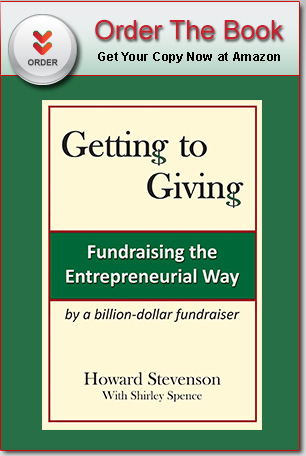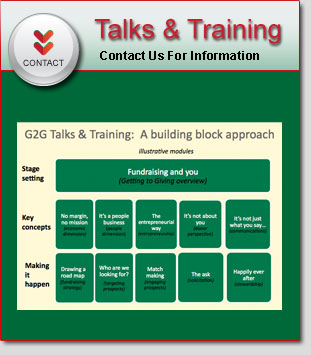One day, over lunch, Howard and his colleagues were exchanging stories about their fundraising experiences.
They joked about “performing cashectomies” by “extracting cash without anesthesia,” and “hand to hand combat in the philanthropic arena.” But, mostly they talked, with pride, about what was being accomplished through the funds they had raised, and the many opportunities still out there.
They also recalled and marveled at all the activities and factors required for success, and bemoaned the over-simplification of the challenges by many fundraisers.
Some fundraisers take a sausage-making approach. Haul out the gift pyramid, and grind through these steps exactly, using these tools and methods, they say.
Others take what, at best, can be called friend-raising. (At worst, it’s more like a lamprey eel.) Latch onto someone wealthy, and hang on until they give (up), they say.
Both are exaggerations of elements that are both necessary for effective fundraising: process and relationships.
Process
Well defined, efficient, technology-enabled processes are important. They help ensure that interactions with prospects and donors are productive as well as pleasant. Prospect information is at fundraisers’ fingertips, dinner events run smoothly, and gift acknowledgements are timely and accurate. The fundraiser doesn’t have to worry about behind-the-scene details.
But there is a danger of getting trapped in rigid procedures and routines. A certain amount of entrepreneurial spirit is required, in any activity.
One nonprofit leader told us that a big part of her organization’s success was due to development officers’ ability to think on their feet, find an intelligent answer for all obstacles, and constantly change methods to address prospects’ different wants and needs.
You have to keep asking “Why do we do it that way?” You have to be willing and able to change or create a process, not get stuck in the old rulebook.
Relationships
Who can argue with the importance of building and maintaining relationships with people supportive of your cause? Howard will be the first to agree that Capital Campaign leadership’s long-time personal relationships with prospects were an important factor in Harvard Business School’s fundraising success.
But, taken in isolation or to extremes, that strategy is flawed as well.
Ultimately, the point is to get philanthropic support, not just cheerleaders.
There also is the risk is that the donor becomes attached to a specific individual at an institution. What happens if that person leaves the organization? That is one reason why many development offices make a point of introducing donors to several staff members, and stressing that they are all there to serve.
A similar problem sometimes arises with charismatic leaders of organizations, especially founders.
People become more committed to the person than the cause or the overall organization, which can pose problems down the road.
You are not trying to create personal friendships, although that may be a pleasant byproduct. You are trying to create relationships that tie donors with your organization and its mission. The fundraiser is a go-between, trying to identify, forge and sustain those ties over time.



